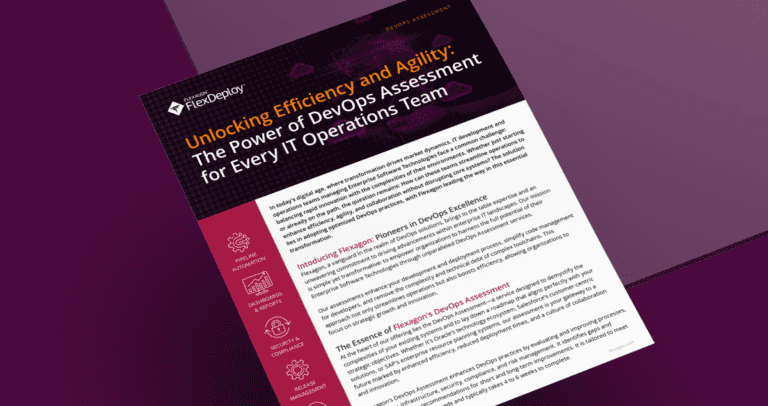More and more companies adopt DevOps every day to improve their output and better their internal communications. DevOps is now seen as a necessity for organizations to adopt in a fast-paced market that continues to emphasize rapid-fire, high-quality product development and release—and for good reason.
DevOps can help organizations deliver applications and services faster than any traditional software development and infrastructure management processes. This is because it eliminates the gaps between development and operations silos to boost communications and performance.
The result? Improved products supplied at a pace that better serves customers and helps your company maintain—or increase—its market share. But how do you get to that point? What are the steps a business can take to prepare for and implement in their teams
Steps in Prepping for DevOps Implementation
Adopting DevOps requires a specific plan of action to get you on your way. Let’s take a look at the four main phases.
1. Laying the Groundwork
Before jumping into DevOps practices, concentrate on laying a solid foundation. Why do you want to use DevOps? You should have at least a basic idea of what goals you hope to accomplish and how you will go about achieving them.
Some fundamentals to establish before embarking on DevOps include how to manage configuration, branching, and releases. You’ll also need to settle on tooling for development, testing, and deployment. Further, it’s important to choose the right performance indicators to assess how well the transition is working.
2. Aim for 80/20
DevOps involves taking small, incremental steps to realize continuous improvement. You want to make gradual headway while employing the 80/20 principle—a broad concept that has multiple applications. In software development, it can refer to 20% of the work accomplishing 80% of your goals—as well as the last 20% of your goals taking 80% of the work!
As such, it’s smart to decide from the outset how strict to be in applying DevOps to reach your goals. For most purposes, it doesn’t make sense to aim for 100% because you’ll expend a lot of resources on features that most users won’t notice. The exact amount depends on the nature of your project and the maturity of your processes. That said, a good general guideline is to aim for 80% completion at 20% of the cost.
3. Selling to Leadership
DevOps is not just a different technical method—it’s a different approach to business. For this reason, it’s critical to involve your business’s leadership in the transition. They’re the ones making the investment. That means being able to speak the language that business leaders understand and appeal to them with the relevant benefits and performance indicators.
Ideally, you should collect before-and-after metrics to present some solid evidence. For instance, conduct a pilot project and compare the results to a representative sample from your pre-DevOps operations.
Does DevOps resolve the longstanding issues your organization has had with delivering reliable and secure software in a timely manner? Have different teams had problems communicating with each other or passed on work that should have been their own responsibility? Use whichever problem/solution situations DevOps addresses for your organization to convince decision-makers of its merits.
4. Organizational Change
Switching to DevOps is an organizational change—and it’s important to treat it as such. Change is difficult for anyone. As your process matures, development and operations personnel will increasingly be able to work more efficiently together. Until then, try to simplify the transition.
You might want to prepare for organizational change by having some developers gain experience working in ops, and some operational employees becoming involved in development issues. Start small and keep blending the teams until you’ve reached a DevOps arrangement that works.
As a leader in DevOps solutions, we offer a DevOps Assessment tailored to revolutionize your IT operations, ensuring you’re always a step ahead.

DevOps Best Practices
In addition to taking these steps to prepare for DevOps, it helps to know some best practices. These are the tested methods that have worked for other organizations employing DevOps. You’re free to adapt them for your own business to increase the likelihood of an effective joining of teams.
Tools and Technology
For a start, you need the right technologies, and it’s useful to learn about the various tools for tasks throughout the DevOps pipeline. Flexagon’s FlexDeploy integrates with many of these tools and also includes powerful functionality to automate builds, testing, and deployment.
Culture and Mindset
DevOps isn’t simply a process of implementing the right technologies—it requires a different organizational culture. Consider how your company can take on the DevOps mentality. That means automation (wherever practical) and incremental steps that incorporate feedback.
Methods and Strategies
Deployment strategies such as A/B involve testing code alternatives in running environments to find optimal solutions. Experiment with these through small modifications, and you’ll isolate the changes that work best.
Agile project management is a DevOps best practice that focuses on collaboration and efficient development. Each task goes through a series of steps, such as “to do” or “in review.” These minor yet manageable tasks are easy to keep on schedule.
Another best practice is known as “shift left.” This entails moving development tasks earlier in the software lifecycle, like testing, quality, and performance evaluation, to find—and fix—bugs as soon as possible. This way, you prevent them from becoming major problems further down the line. You can also shift security left to transform DevOps into DevSecOps.
Continuous integration and continuous delivery (CI/CD) are best practices in which you regularly (several times per day) add new code into builds and deployments. This ties in with the core DevOps notion of fast, frequent action to reduce errors. Automation is also key to CI/CD.
You want to automate practically every phase of the DevOps pipeline. This includes testing and deployment, which is something you can also manage with FlexDeploy.
Automation saves you time as well as cutting down on mistakes and glitches. It’s also vital to monitor the software you produce during operation and to maintain observability.
Get Ready for DevOps with FlexDeploy
Now that you have a better idea of how to prepare for DevOps, it’s time to start using the right processes and technology. FlexDeploy solves many of the potential challenges to implementing DevOps and encourages best practices. In addition, it helps with cloud migration, which will also boost the speed of your DevOps.
FlexDeploy uniquely understands the complexity and intricacies inherent in enterprise software technology platforms like Oracle EBS, Salesforce, and SAP. It supports DevOps throughout development and operations in areas such as build automation, deployment automation, and release orchestration.
Schedule a demo to experience the benefits of FlexDeploy first-hand!



